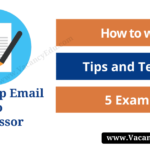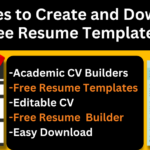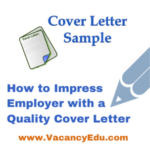Five Steps of Writing a Great Resume
Your resume provides an overview of your experience and is often an employer’s first impression of you. Recruiters spend just a few seconds on average looking at a resume so it is crucial to use a format that makes relevant information immediately visible.
A good resume can help you land an interview, but even minor errors can take you out of the running. Schedule an appointment with a counselor to ensure it will be effective.
If you find yourself needing immediate feedback, we encourage you to use our online platform VMock! Upload your resume and instantly receive advice and edits based on the metrics of other MIT undergrads, grad students and postdocs.
Step (01) Use the position description to decide what to include.
While you might keep a ‘master resume’ detailing all your experiences and awards, when applying for a job you want to build a resume that targets a specific position or employer. Look at the skills required for the position and select experiences where you demonstrated those skills. Remember: experience comes in many forms. In addition to jobs, internships, UROPS or leadership roles, consider including class projects, competitions or even personal projects. Just be sure to describe the experience in terms that make its relevance clear.
Step (02) Pick a standard and consistent format.
Resume templates become increasingly difficult to edit with time, so it’s best to start with a blank page and look at sample resumes (pdf). Recruiters don’t have time to search your resume for information, so they appreciate familiar formats. Use a conservative font no smaller than 10pt and leave at least half inch margins on all sides. Stick to one page, unless you have extensive experience or an advanced degree. Use bold text sparingly to highlight key information or section headings.
Step (03) Describe your experiences with specificity and strong action verbs.
Resumes don’t require complete sentences and you should avoid using the first person (I, me, my). Start descriptions with a strong action verb like built, managed, developed, wrote, etc. See this list of action verbs for resumes (pdf) for ideas. Include more than the technical aspects of your experiences. Collaboration and communication such as reports or presentations are also valuable skills in most fields.
Whenever possible, include how you performed tasks, not just what you did. For example, if you wrote software, say what language you used. For lab work, mention specific techniques. Although you might choose to list these skills in a Skills section, including them in experience descriptions reinforces them by putting them in context.
Step (03) Record accomplishments and contributions, not just responsibilities.
The best way to articulate your impact is with factual accomplishments. Your experience descriptions shouldn’t read like job descriptions. While it might be technically accurate to say “was responsible for delivering projects on time,” it’s much more effective to say “ensured projects were delivered on or ahead of schedule.” Did you improve a process or make a crucial discovery? Don’t wait for an interview to talk about it. Quantify if you can. If you gave a presentation, include how many people attended. If you raised or managed money, say how much.
Related Posts
- Polite Follow-Up Email to Professor : When and How You should Write

- Online PhD Programs: Pros and Cons, Universities, Courses, Career.

- Top Websites to Create and Download Free Resume Templates

- Top 25 Free Statistical Analysis Software 2024

- What is a letter of intent (LOI)? Meaning with Sample

- PhD in Psychology : Career, Admission Process, Benefits, Opportunities.

- What is PhD : Meaning, How to Do, Benefits, Full Details

- How to Write a Motivation Letter for PhD, Postdoc, or Any Position: Sample Motivation Letter

- How to increase Brain Power – Secrets of Brain Unlocked

- Postdoc Application Cover Letter Template

- How to write a Postdoc Job Application or Email

- How to Write a Curriculum Vitae (CV) for a Job Application

- Five Steps of Writing a Great Resume

- How to Write an Effective Cover Letter
















